Summary
In order to process how religion figured into the 2020 news cycle, our trialogue featured individual participants’ presentations, large-group discussions, and small-group response sessions. We represented three separate but interlinked vocations—journalism, academia, and religion. We wanted to discuss both the stories that circulated about 2020 as well as what we did and how we did as storytellers. Academics contributed historical, theological, and ethical perspectives on their researching and teaching religion; media professionals discussed their craft and constraints in covering the faith beat; and religious leaders expanded on their responsibilities to respond to national and global news events from the pulpit, and to hear and tell the stories of their communities.
We organized our three days together by three major events of the year:
- Day One’s “Religious Responses to Coronavirus” examined COVID-19’s impact on religious thought and practice beginning in the spring;
- Day Two’s “When Black Lives Matter, So Does Faith” saw religion respond to police killings of George Floyd and Breonna Taylor and the summer uprising that followed; and,
- Day Three’s “Polarizing Religion: Faith and Partisanship in the 2020 Elections” investigated religion’s role in reconfiguring partisanship around the United States’ national elections in November.
Day One
Mahan Mirza set the stage for the workshop: Academic scholars of religion often deplore what they perceive as lack of nuance or sensationalism around religion in headline news; journalists often find academic accounts of religion too abstract or overcomplicated; and faith leaders sometimes find news stories and academic reports about their communities misinformed and condescending. These impasses, he proposed, could be overcome through small-scale trialogues—bringing representatives from our three professions together to identify and build on our commonalities and collaborations in order to understand more deeply our vocational differences to mutual advantage. The Ansari Institute’s October 2019 conference, Religion Beyond Memes: Enhancing Public Discourse about Faith and Practice, he explained, emphasized the potential of building workshops to pursue shared, working understanding of how our respective professions engage with religion, its varied representations, and the public.
While initiatives like the Faith Angle Forum bring together academics and journalists to discuss religion’s role in public life, and programs like Sacred Writes train scholars to navigate the media landscape in producing public-facing scholarship, we wanted to build a set of workshops to bring faith leaders directly into the conversation. “Faith in the Story” refers both to our shared dedication to keeping authentic and complex stories about religion in the news, and our commitment to the stories we are compelled to tell from our respective vocations. Participants had been asked to distribute news stories they either wrote or wanted to comment on before the workshop; each participant contributed individual analyses, but through sustained conversation the group was able to read deeper into the news.
Peter Cajka first welcomed our trialogue participants with his presentation on “Notre Dame in the Story,” walking us through moments in 2020 when our university itself made national news with respect to COVID policy, Black Lives Matter, and President Trump’s appointment of Amy Coney Barrett as Supreme Court Justice. His summary culminated with an image of the “God, Country, Notre Dame” flag at the January 6, 2021 assault on the Capitol. The flag’s presence elicited both difficult questions and spectacular classroom discussions.
Kelsey Dallas, in “Magnified Problems, Minimized Pain: Reflecting on Religion Coverage during COVID,” reflected on her colleagues’ and her own stories about religious groups’ sincere willingness to conduct services in person at the height of the pandemic. Her ideal, given the benefit of hindsight, would have privileged more nuanced stories with a greater diversity of voices.
Anita Houck’s “Eutrapelia and Utility: Good News, Funny News, News about Funniness, and the Possibilities of Virtual Community” examined the role of humor in religiously inspired political critique and public health messaging. She explained how the well-wrought antics of religious “laughtivists” could deliver joyful news and serve as an antidote to widespread pessimism, selfishness, and loneliness.
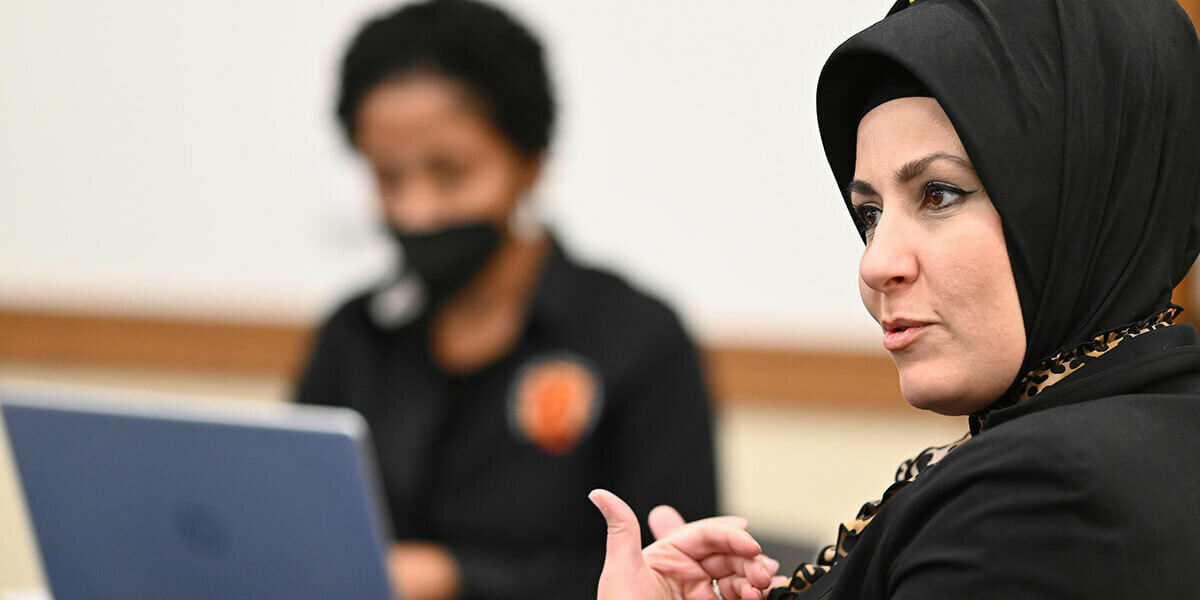
Our first response session focused on “Our Professions.” Through a set of questions that asked us to identify commonalities, the three professions first broke into three groups to discuss the joys and challenges of our respective callings and the callings of the other two groups. We then broke into groups with one academic, journalist, and faith leader each to compare notes and build mutual understanding. For instance, we ask participants to answer what each profession would say is “the best” and “most difficult part of the job,” and how they report the job having changed in the last fifty years. While we had as many answers as participants, this exercise encouraged participants to speak on behalf of others who share their profession, and to listen to others speak on behalf of theirs. Our presentation sessions continued with Abla Hasan, who in “Rethinking the Beginning: A Key to Solving the Problem of Pain and Suffering,” offered a Qur’anic perspective on pain and suffering, reframing Adam and Eve’s exile not as divine punishment but as a divine test to demonstrate humanity’s capacity to rise to the occasion. The ongoing epidemic, she said, should also be understood as a test.
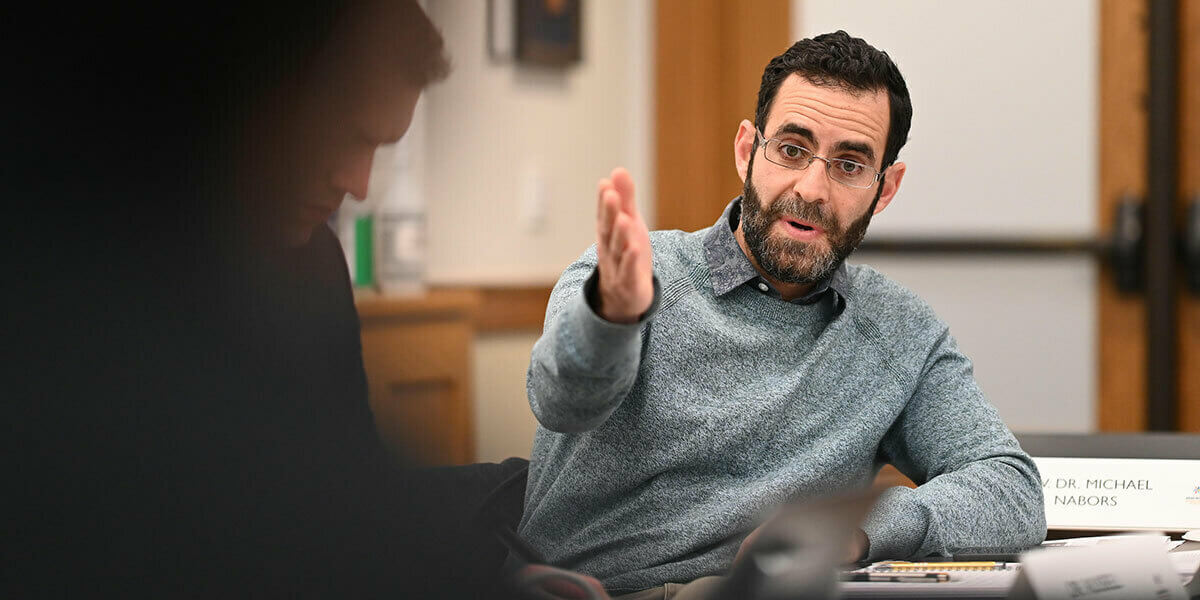
Alan Levinovitz’s “Coronavirus is not Mother Nature’s Revenge” argued forcefully that journalists mislead the public when they uncritically parrot religious individuals’ and institutions’ false claims about health and science. He suggested that the religiousness of these alternative views shields them from the fact-checking that often accompanies the mistruths uttered by politicians. Finally, Olivia Wilkinson spoke on public health experts’ incomplete coming to terms with the complexities of religion across the planet in their rush to use local faith leaders to disseminate their messaging. Throughout the day, by working and thinking together, we learned to see the virtues of effective translation and partnership when religion confronts a pandemic.
Day Two
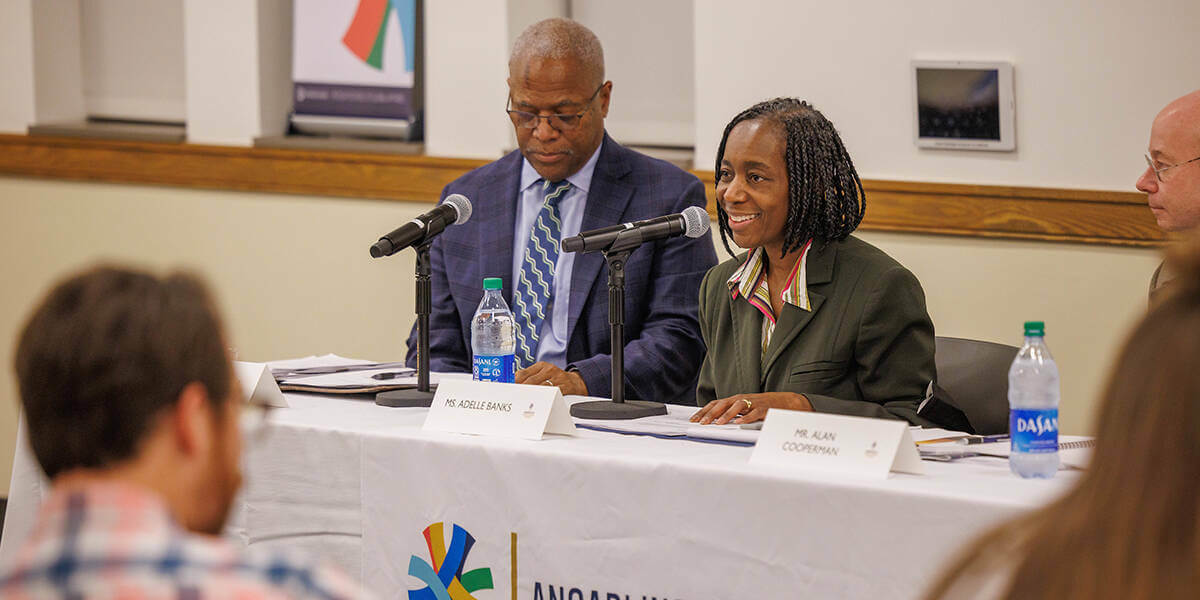
In their joint presentation, “’Beyond the Most Segregated Hour’: A Case Study in Collaboration,” Matthew Cressler, a historian of race and religion, and Adelle Banks, a religion reporter who often reports on race and history, described their partnership over 2019 and 2020 in several co-authored or collaborative pieces published for Religion News Service. Their coverage told complex stories about racial reconciliation, multiethnic churches, and reparations for Black churches. In addition to sharing phone calls and electronic documents, they shared with each other the storytelling tricks of their respective trades.
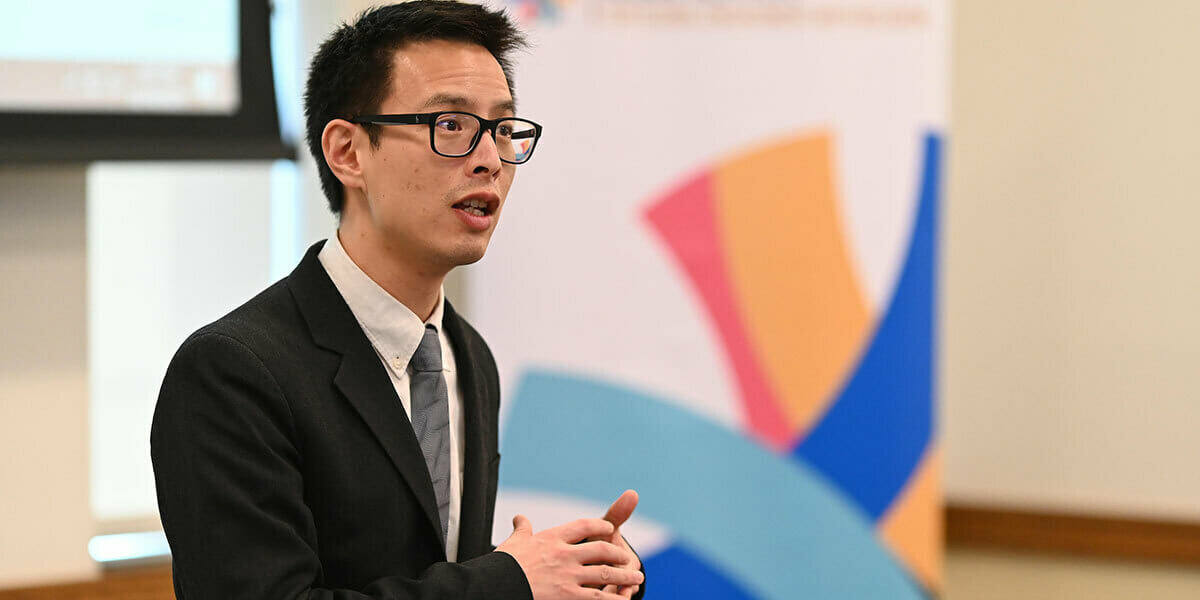
Alexander Hsu and Peter Cajka, led the day’s discussion session, “Does Religion Journalism Have a White Supremacy Coverage Problem? A Case Study in Activist Journalism and Censorship.” Conversation focused on progressive Christian magazine Sojourners’ messy retraction and reinstatement of Eric Martin’s strongly charged piece, “The Catholic Church Has a Visible White-Power Faction,” from August 2020. Together we interrogated the ethics and the mechanics of writing, fact-checking, and editing politically charged work.
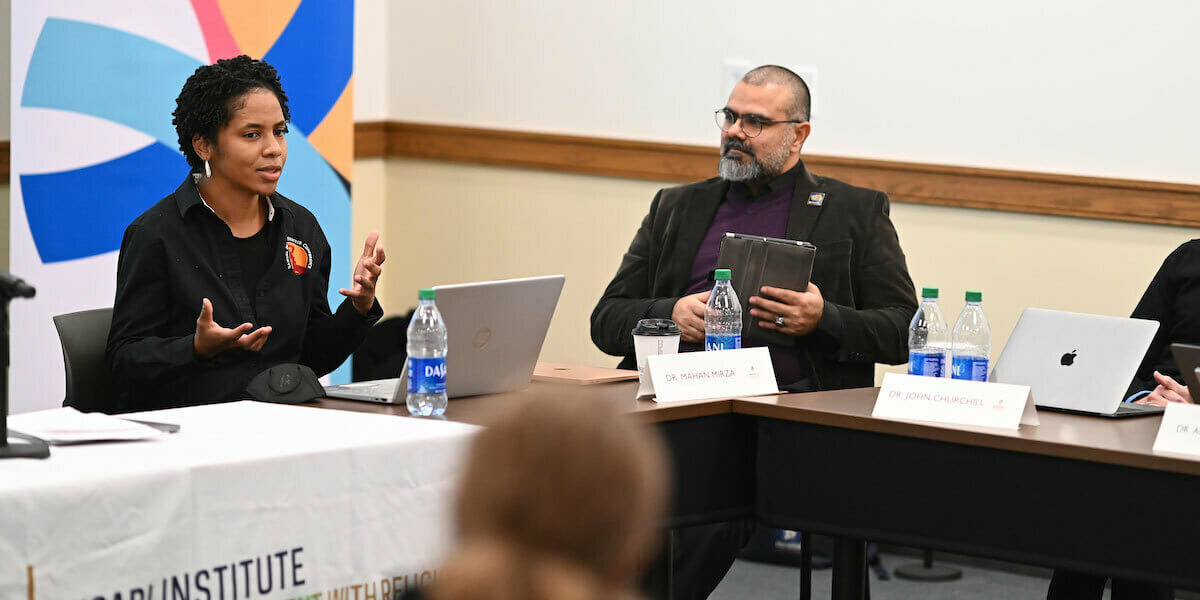
Tiauna Webb, in “Holy Rage, Holy Hope—Responses to Black Rage,” discussed how she and other Black Christian thinkers have wrestled with how to frame, temper, or channel their own anger at racialized injustice, and how she works with her students to identify venues where their rage could be fully expressed and heard. In “This is Our Story: Work in a Local Church and Community,” Michael Nabors shared with us how his church in Evanston, Ill. waged a war on racism, holding a series of intergenerational events to reckon with the history of his city as well as remind all generations that “the best is yet to come.”
We closed out the day with our second response session on “How We Tell Stories,” where we spoke within professions about what we thought good teaching, reporting, and ministry look like; and we spoke across professions about how stories are inspired, crafted, authored, and adapted for different purposes. In answering questions about stories’ “hooks,” what inspires stories “besides a deadline,” and “stories that are important for you to tell but that audiences find difficult to hear,” individual participants could begin to reimagine their respective challenges as shared ones. Race, racism, and religion were shown to intersect in myriad expected and unexpected ways; and the work of our three professions equally aim to develop stronger focus on what we have been trained to see and greater understanding of what only others can show us.
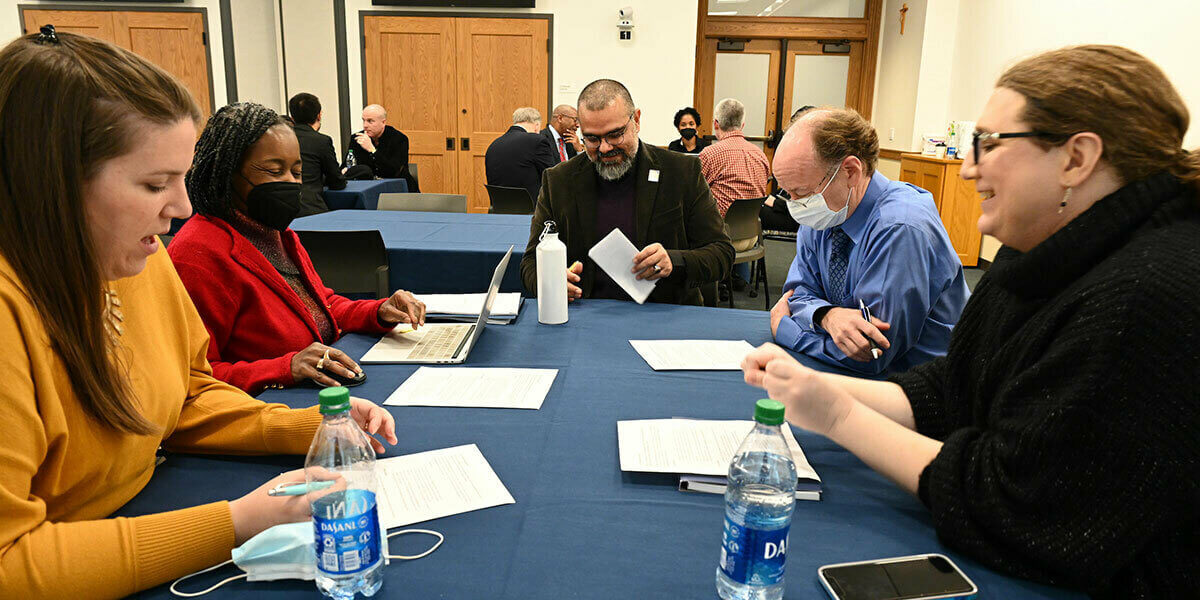
Day Three
Richard Baker’s “Doomscrolling Towards the Apocalypse: Faith as a Source of Civic Unity and Inner Peace” inveighed against misology and misanthropy—the hatred of reason and the hatred of humans—that “doomscrolling” through incessant bad news can lock us into. And he described, as one solution, his church’s work to procure government-issued IDs for immigrants and unemployed people so they can get jobs. Russell Johnson’s “Forged in Battle: How Polarization Creates Religious Communities” reviewed social psychology to analyze how a “culture war,” increasingly fought on “religious” turf, sustains itself: group loyalty often trumps public reason.

Chrissy Stroop’s “America’s National Conversation about Christianity is Fundamentally Unserious—But Probably Not in the Way You Think” iterated arguments from her portfolio pushing back on pro-evangelical biases in mainstream reporting and opinion writing, and championed ex-vangelical voices as offering a fresh and invaluable perspective on the Christian Right. Finally, Alan Cooperman’s “The Pleasures and Perils of Trying to Measure, and Report on, Trends in Religion Around the World'' explored the work of the Pew Research Center and scholars measuring “existential insecurity” and transformations in religiosity around the world. The final response session featured Mahan Mirza and Alexander Hsu explaining in greater detail the origins of “Faith and the Story” and soliciting feedback for the future of these trialogues. Small groups brainstormed about what a trio consisting of of a faith leader, journalist, and an academic—building off friendship begun at this conference—could accomplish with a large grant.
Alan Cooperman, Michael Nabors, Adelle Banks, and Russell Johnson led our concluding evening public panel, summarizing what they had learned as individuals and what we learned as a group. Certainly 2021 has offered us new hope and new challenges for our professions in deepening our understandings of religion and sharing them with the public—and new hope and new challenges for religion’s roles in the political process. Going forward, we hope our practices of deep listening and careful relationship building can strengthen our institutions and form part of the solution by informing and empowering the public.
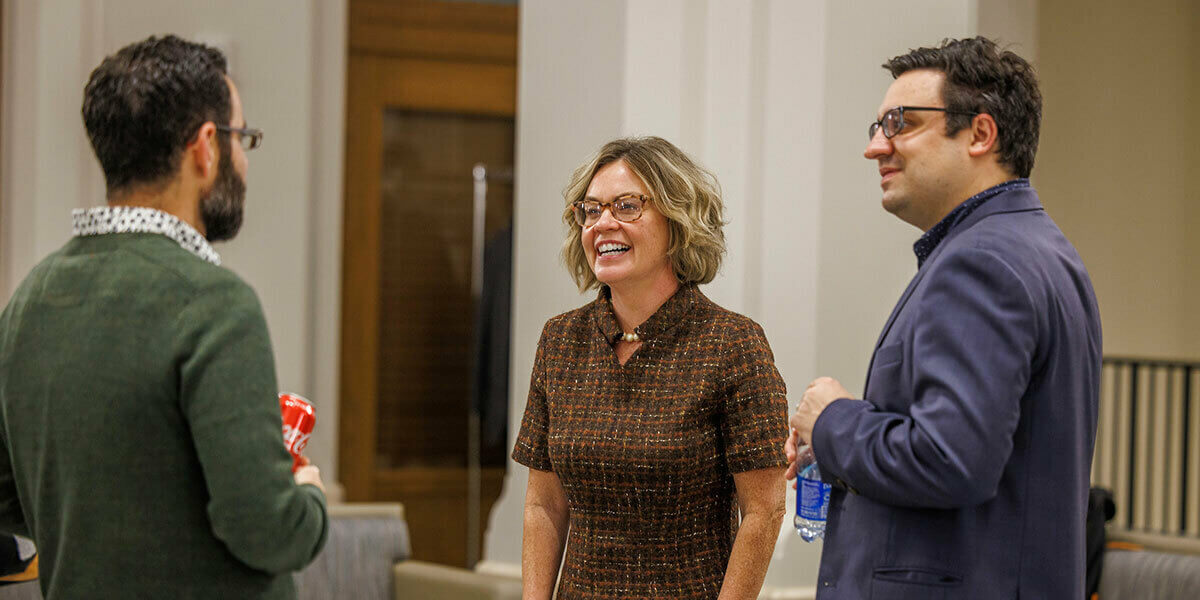
A reception and closing public panel helped round out the workshops. From left, Alan Levinovitz, Associate Professor of Religion at James Madison University, talks with Kathleen Sprows Cummings, the William W. and Anna Jean Cushwa Director of the Cushwa Center for the Study of American Catholicism at the University of Notre Dame, and Peter Cajka, Assistant Teaching Professor at Notre Dame’s Department of American Studies.
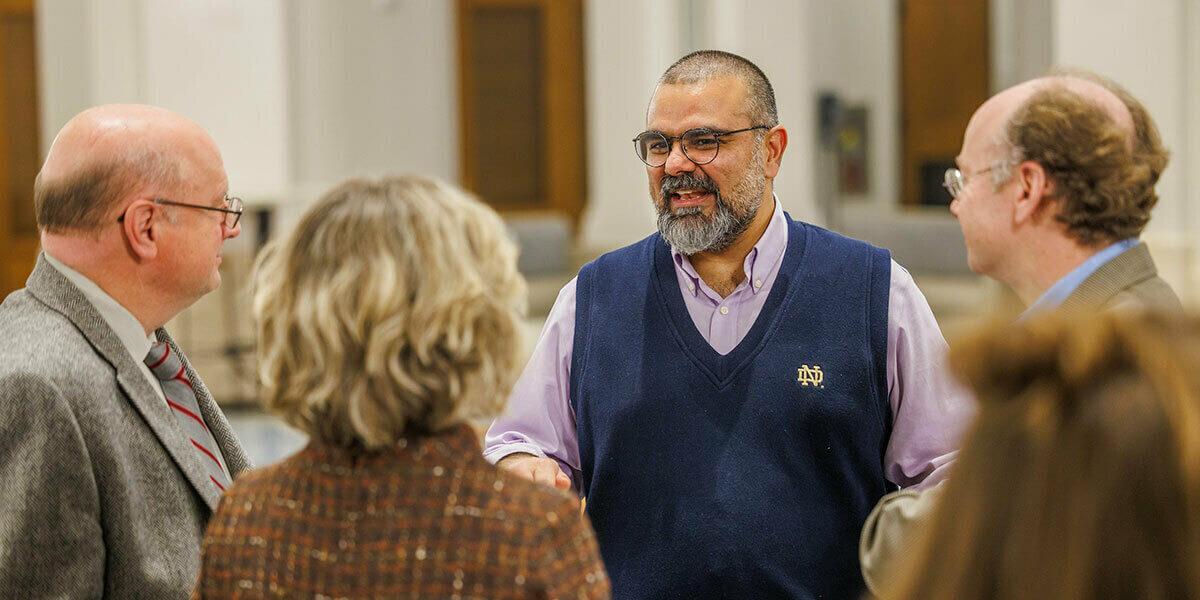
Both the public panel and the reception allowed participants and special guests to reflect on these key themes that had emerged during several days of dialogue and discussion.
The previous summary borrows from remarks delivered by Russell P. Johnson during our concluding public panel discussion. Thank you, Russell!